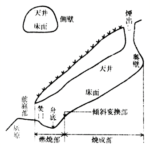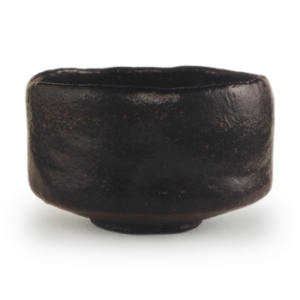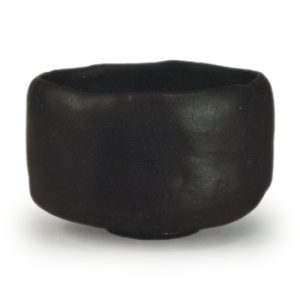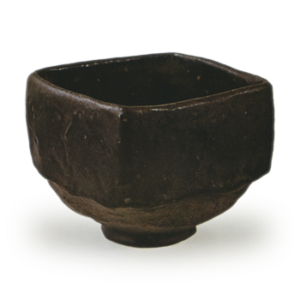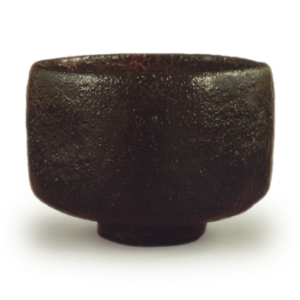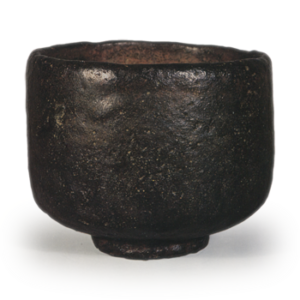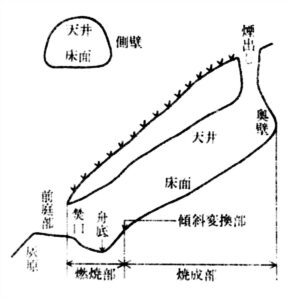
Anagama is a type of old kiln. It seems to be an ancient Korean style. In the period of unglazed ceramics of the early period, cellar kilns were generally used for blue-black reduction firing, but those remaining in the later periods in Ibe and Tokoname are somewhat more inclined toward glazing and oxidizing firing. The ordinary cellar kiln is a kiln with a ceiling constructed by digging a slope, usually with a single chamber and a hole in one side of the ceiling. In the old days, it was called a large kiln, and later it was also called a teppo kiln, etc. However, since the Karatsu type climbing kiln became popular in the early Edo period, the cellar kiln style has gradually declined, and nowadays only a few cellar kiln cross sections remain in the backcountry. The cellar kilns in Tokoname were dug out of the ground to make kilns. The kilns in Tokoname were dug out of the ground, and only the ceiling was built. See “Sue ware” and “Earthenware Firing Methods” for archaeological explanations. (Studies in Ceramic Crafts, The Essence of Ceramic Civilization)

